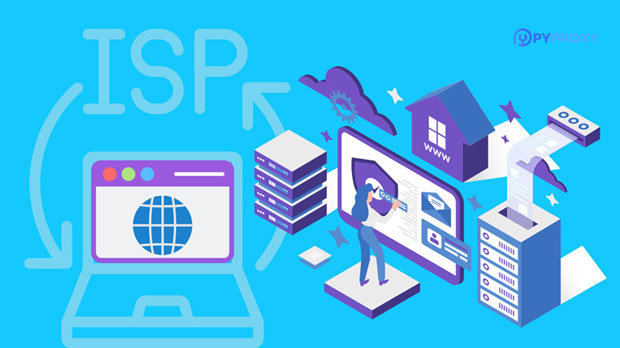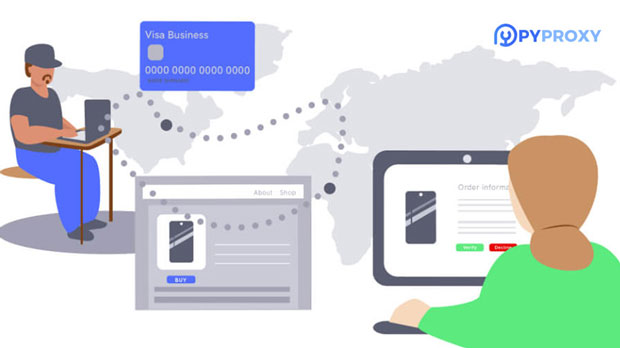HTTP proxy or SOCKS5 proxy, which is more effective for anonymous Internet access?
In the world of online privacy and security, proxies play a critical role in safeguarding users' identities. Among the various proxy types available, HTTP proxies and socks5 proxies are two of the most commonly used. Both have their strengths and weaknesses, especially when it comes to anonymous browsing. This article will delve into the fundamental differences between these two proxy types, analyze their effectiveness in maintaining anonymity, and help users determine which one is better suited for their needs. While both proxies can mask a user's IP address, they function in different ways and offer distinct levels of privacy protection. Understanding HTTP ProxyHTTP proxies are designed to handle traffic at the HTTP or HTTPS protocol level. They act as intermediaries between a user's device and the web server, forwarding requests on behalf of the user. HTTP proxies are commonly used for web browsing and can help users access geo-restricted content or hide their IP address to some extent. However, when it comes to anonymity, they have limitations that users must be aware of.How HTTP Proxy WorksAn HTTP proxy functions by intercepting and forwarding HTTP requests between the client (the user) and the web server. It essentially acts as a relay server, receiving the user's request and forwarding it to the intended destination. When the server responds, the proxy forwards the data back to the client. Importantly, an HTTP proxy only works with web traffic—meaning, it does not support other types of internet traffic such as FTP, peer-to-peer, or non-HTTP-based protocols.One of the main benefits of HTTP proxies is their simplicity. They are easy to set up and widely supported by most browsers. However, their main limitation lies in the fact that they only work with web traffic, and they do not encrypt the data transmitted between the user and the proxy server. This lack of encryption can make it easier for third parties, such as hackers or ISPs, to monitor online activity.Limitations of HTTP Proxy for Anonymous BrowsingWhile an HTTP proxy can obscure a user's real IP address, it does not provide the highest level of anonymity. The proxy server itself can potentially log the user's activities, revealing their identity. Moreover, since HTTP proxies do not encrypt traffic, anyone monitoring the connection can see the data being transmitted. This makes it vulnerable to certain types of cyberattacks, such as man-in-the-middle (MITM) attacks.Furthermore, HTTP proxies are typically restricted to web browsing only, meaning that users cannot use them for other types of internet activities like gaming, video streaming, or file sharing, where anonymity might also be desired.What is socks5 proxy?SOCKS5 is a more advanced proxy protocol that supports a wider range of internet traffic compared to HTTP proxies. Unlike HTTP proxies, SOCKS5 can handle a variety of protocols, including HTTP, HTTPS, FTP, SMTP, and even peer-to-peer (P2P) traffic. This makes it a more versatile choice for users who require anonymity across different types of online activities, such as secure browsing, torrenting, or using VoIP services.SOCKS5 proxies operate at a lower level of the OSI model (Session layer), which means they are not limited to web traffic alone. This broader support for different types of data makes SOCKS5 a more comprehensive tool for maintaining anonymity online.How SOCKS5 Proxy WorksSOCKS5 proxies route all types of internet traffic through the proxy server. When a user connects to a SOCKS5 proxy, the proxy server handles the entire request, including the initial handshake with the target server. This means that the target server does not directly interact with the user’s device, helping to protect the user’s IP address from being exposed.One of the most significant advantages of SOCKS5 over HTTP proxies is its support for both encrypted and unencrypted traffic. Users can choose whether they want to use a secure connection (such as through SSL/TLS encryption) or a non-secure connection, depending on their needs. This flexibility adds an additional layer of security, which is crucial for anonymity.Advantages of SOCKS5 for Anonymous BrowsingThe primary advantage of SOCKS5 proxies over HTTP proxies is their versatility. SOCKS5 can handle a wide range of internet protocols, making it suitable for a broader array of online activities. Whether users are browsing the web, streaming videos, engaging in file sharing, or using VoIP services, SOCKS5 proxies provide an effective way to hide their IP address.Moreover, SOCKS5 proxies do not require the same level of data parsing as HTTP proxies, which means they are less likely to be detected by websites or web servers. This makes SOCKS5 a more reliable option for users looking to maintain privacy while engaging in various online activities.Additionally, SOCKS5 offers greater security features. Although it doesn’t automatically encrypt data, it supports various encryption protocols, allowing users to enhance the security of their connection. This can be especially important when handling sensitive information or browsing through public Wi-Fi networks.Comparison: Which is Better for Anonymity?When evaluating which proxy is more effective for anonymous browsing, it is important to consider several factors:1. Traffic Type: HTTP proxies are limited to web traffic, whereas SOCKS5 proxies can handle a wide range of internet protocols, including web browsing, file sharing, and VoIP. 2. Encryption and Security: While neither HTTP nor SOCKS5 proxies inherently encrypt traffic, SOCKS5 offers more options for encryption and greater flexibility. This makes it a more secure choice for users seeking anonymity.3. Anonymity Level: SOCKS5 is generally more effective in providing anonymity compared to HTTP proxies, due to its broader scope of usage and ability to support encrypted connections. HTTP proxies are more prone to data leakage, and they don’t offer the same level of protection against third-party monitoring.4. Ease of Use: HTTP proxies are simpler and easier to set up, making them a more user-friendly option for those with basic privacy needs. SOCKS5 proxies, on the other hand, are more complex and may require additional configuration, particularly for encryption settings.Conclusion: Which Proxy Should You Use for Anonymous Browsing?In conclusion, while both HTTP and SOCKS5 proxies serve the purpose of masking your IP address, SOCKS5 is generally the better option for users seeking higher levels of anonymity and security. Its ability to handle multiple types of traffic and support encryption makes it a more versatile and secure choice for a wide range of online activities. HTTP proxies, while simpler and more accessible, offer limited functionality and weaker security, making them less ideal for users who prioritize privacy.For those who need anonymity not just for web browsing but also for activities like torrenting or using non-HTTP-based services, SOCKS5 should be the preferred choice. However, for users with basic needs—such as accessing region-locked content or browsing anonymously on websites—an HTTP proxy might be sufficient. Ultimately, the decision will depend on your specific privacy needs and online habits.
2025-01-03

























































